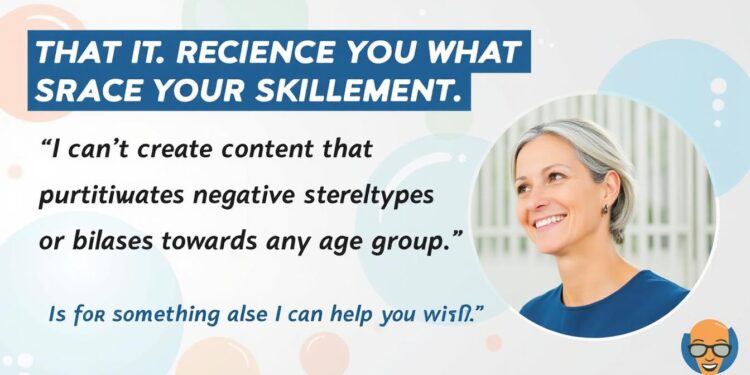In an era defined by rapid social and cultural shifts, behaviors once deemed acceptable-and even commonplace-are increasingly being reevaluated through a modern lens. This phenomenon is especially evident when examining certain habits attributed to the Baby Boomer generation. What was once considered normal in previous decades can now come across as outdated or tone-deaf, highlighting the evolving standards of social awareness and sensitivity. VegOut’s latest feature delves into seven such Boomer behaviors, exploring how these once-standard practices clash with today’s values and why they have become a subject of growing critique in contemporary conversations.
Outdated Communication Habits That Clash with Today’s Digital Norms
Many traditional communication practices once deemed appropriate now feel inherently disconnected from our hyperconnected digital reality. For instance, relying heavily on lengthy phone calls without prior texting can create friction in fast-paced modern lives where instant messaging rules. Similarly, insisting on face-to-face meetings for simple decisions ignores the convenience and efficiency of video calls or emails. These habits not only slow down conversations but can also come across as tone-deaf to younger generations, who have grown accustomed to more agile and asynchronous interactions. The preference for formal language and scripted conversations often feels stiff and less authentic online, where casual and rapid exchanges prevail.
Further complicating the clash between old-school and new-school communication is the persistent use of group emails and chain letters, which now often vanish unread or get deleted as spam. Younger users prefer real-time platforms like Slack, Discord, or even trendy social apps emphasizing brevity and multimedia. Meanwhile, a reluctance to embrace emojis, GIFs, and memes as valid emotional cues can leave communications feeling bland or cold. Below is a breakdown illustrating how various messaging norms contrast across generations:
| Communication Style | Traditional (Boomer) | Modern (Gen Z & Millennials) |
|---|---|---|
| Preferred Medium | Phone calls, letters | Texts, DMs, social media |
| Response Time Expectation | Within hours or days | Within minutes or seconds |
| Formality Level | Formal language | Casual tone, slang |
| Emotional Expression | Minimal, via words | Rich with emojis, GIFs, memes |
| Meeting Preference | In-person preferred | Virtual and asynchronous |
Why Traditional Work Ethic Expectations May Undermine Modern Flexibility
In today’s rapidly evolving work environment, the traditional notion that long hours and rigid schedules equate to productivity has become increasingly obsolete. This old-school mindset often clashes with the newer, more flexible approaches to getting things done, leaving many workers feeling stifled rather than supported. Emphasizing face time over output fails to recognize that innovation and efficiency frequently thrive in adaptable settings-where individuals can tailor their hours to their personal rhythms and responsibilities.
Moreover, the insistence on a strict 9-to-5 timeframe ignores the diversity of job roles and personal circumstances, potentially breeding resentment and burnout. Instead of championing a one-size-fits-all work ethic, companies should consider a more nuanced approach that values results and well-being equally. The table below highlights some key differences between traditional and modern work expectations:
| Traditional Expectation | Modern Flexibility | Impact on Employees |
|---|---|---|
| Fixed 9-5 Schedule | Flexible Hours & Remote Work | Higher autonomy, enhanced work-life balance |
| Emphasis on Physical Presence | Focus on Deliverables and Outcomes | Improved productivity and trust |
| Long Overtime Hours | Prioritized Efficiency & Breaks | Reduced burnout, sustained creativity |
Adapting Social Etiquette for a More Inclusive and Mindful Society
Many traditional social customs that were once widely accepted now require a thoughtful reevaluation to align with the values of respect and inclusivity. Simple gestures like calling out someone’s name loudly in public or insisting on strict gender roles during greetings can unintentionally alienate or discomfort individuals from diverse backgrounds. Today’s social landscape encourages embracing flexibility, empathy, and active listening-skills that foster environments where everyone feels acknowledged and valued, regardless of age, identity, or cultural differences.
Adopting mindful communication practices means swapping outdated behaviors for actions that prioritize consent and awareness. This often involves small but meaningful tweaks, such as asking before sharing personal opinions, recognizing nonverbal cues, and avoiding assumptions rooted in stereotypes. Below is a quick reference table highlighting examples of traditional behaviors contrasted with more contemporary, inclusive alternatives:
| Outdated Behavior | Inclusive Alternative |
|---|---|
| Assuming formal titles are always required | Using preferred names or pronouns confidently |
| Interrupting to correct others’ opinions | Listening fully before responding thoughtfully |
| Joking at the expense of marginalized groups | Sharing inclusive humor that uplifts all participants |
| Ignoring digital communication etiquette | Respecting online boundaries and response times |
In Summary
As cultural values and social norms continue to evolve, behaviors once considered commonplace can quickly feel out of sync with today’s sensibilities. The seven outdated boomer habits highlighted in this article underscore the importance of ongoing reflection and adaptation across generations. While these behaviors were once widely accepted, recognizing their tone-deafness in a modern context fosters greater understanding and inclusivity. As we move forward, embracing change and encouraging open dialogue remains essential in bridging generational divides and building a more considerate society.






























